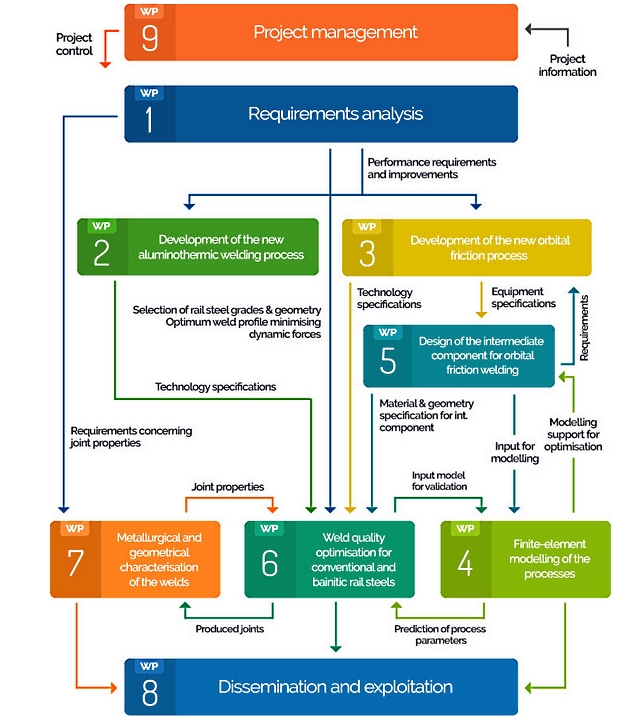WRIST: Innovative Welding Processes for New Rail Infrastructures
These needs will be addressed through a step change of technical improvements of the geometrical and internal weld integrity. One particular focus of the new welding processes to be developed and demonstrated is to overcome the inability of current joining processes to weld together premium grade steels, such as the low carbon carbide-free bainitic grades, which have been developed to answer the increasing demands of increasing speed and growth of railway’s load.
Project goals
The project will offer a step change in the joint performance and reliability, providing an extended in-service life for a range of rail materials, therefore resulting in a significant cost reduction for the maintenance of the track, also freeing up more capacity for rail traffic. In particular, the project is focussed on delivering novel modifications, developments and applications of the aluminothermic and orbital friction welding processes, which will significantly reduce the width of the heat affected zone and minimise the loss of mechanical properties in the weld zone. These innovations will also enable the use of bainitic rail steels which will deliver an increased reliability, a longer lifetime of the rails and welds, combined with a reduction of the cost of maintenance.
Objectives
Key objectives:
- Development and application of advanced joining technologies able to join conventional and bainitic rail steels with a higher quality and reliability, to meet the more stringent infrastructure requirements imposed by increased speed and load, resulting in less maintenance and a longer track lifetime.
- Reduction of maintenance cost and life cycle cost of the rail and welds, due to less repair welding or weld replacement, associated with a higher weld quality and the longer track lifetime.
- Increased availability of the track; less unforeseen maintenance.
- Profit for users : less disruptions and a higher safety level.
- Use of more environmental friendly and energy efficient joining techniques.
Results
Welding processes
The developments of the two processes will be underpinned through the use of extensive experience of the current processes, underlying principles of joining processes, detailed computational modelling, verification through controlled experiments and detailed weld characterisations using laboratory tests and full-scale field testing in industrial or commercial test tracks.
Publications and events
- Link
- Newsletter 1 : Project overview
- Newsletter 2 : Orbital friction welding of rails
- Newsletter 3 : Aluminothermic welding of rails
More information
- For more information about WRIST, please visit the project website : www.wrist-project.eu or
- subscribe to latest news and updates by sending an email to sympa@eurtd.com (link sends e-mail), with the subject "subscribe wrist_list@eurtd.com (link sends e-mail)".

